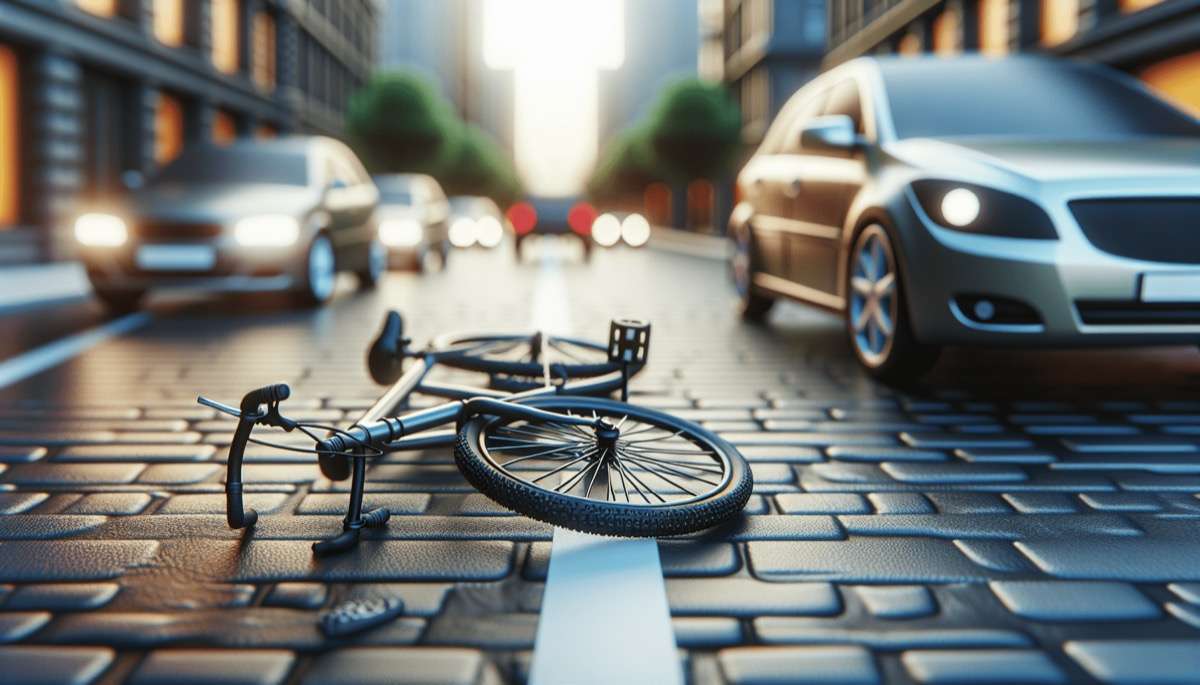Find out if your auto insurance covers bicycle accidents. Learn about coverage types, limitations, and essential tips for cyclists in our informative post.
Have you ever wondered what happens if you get into a bicycle accident involving a motor vehicle? It’s a pertinent question, especially considering the number of cyclists sharing the roads with cars today. Understanding your insurance coverage can make a significant difference when navigating the aftermath of such incidents.
Understanding Auto Insurance
Before delving into how auto insurance interacts with bicycle accidents, it is essential to grasp the basics of auto insurance itself. Auto insurance is a policy you purchase to mitigate financial risks associated with owning and operating a vehicle. It typically offers coverage for damages to your vehicle, liability for bodily injury, and property damage to others in accidents you cause.
Types of Coverage
Auto insurance coverage generally falls into several types:
- Liability Insurance: This covers bodily injury and property damage you cause to others in an accident.
- Collision Insurance: This covers damage to your vehicle resulting from a collision with another vehicle or object, regardless of fault.
- Comprehensive Insurance: This provides coverage for damages to your car not involving a collision, such as theft, vandalism, or natural disasters.
- Personal Injury Protection (PIP): This covers medical expenses, lost wages, and other damages for you and your passengers after an accident, regardless of who is at fault.
Understanding these types of coverage will facilitate your grasp of how they may apply in the event of a bicycle-related incident involving a vehicle.
Do Auto Insurance Policies Cover Bicycle Accidents?
When it comes to bicycle accidents, the answer to whether auto insurance covers such incidents can vary based on the specifics of your policy. Generally speaking, auto insurance may provide coverage in certain circumstances regarding bicycle accidents, but it largely depends on the details of the incident and the policy you hold.
Instances Where Auto Insurance May Apply
- Bodily Injury Liability: If you, as a cyclist, are injured in an accident caused by a driver, their bodily injury liability insurance can cover your medical expenses, lost wages, and pain and suffering.
- Personal Injury Protection (PIP): If you reside in a no-fault state and have PIP coverage, it may extend to cyclists. This means your medical expenses might be covered, regardless of who caused the accident.
- Uninsured Motorist Coverage: If a driver without insurance hits you while you are on your bicycle, and you have uninsured motorist coverage on your auto policy, you might be able to file a claim.
- Damage to Your Bicycle: If you have collision coverage on your auto insurance policy, it may cover damages to your bicycle if you were in a crash.
Limitations and Exclusions
It is crucial to recognize the limitations and exclusions of auto insurance policies regarding bicycle accidents. Here are some common ones:
- Non-Motorist Coverage: Some policies explicitly exclude coverage for non-motorists, including cyclists.
- Lack of Personal Coverage: If you do not carry PIP on your auto insurance, you may not receive benefits for injuries.
- Fault Determination: Auto insurance claims may hinge on determining fault in an accident, which can complicate claims for cyclists.
Types of Insurance Coverage for Cyclists
As a cyclist, having the right type of insurance is essential for your financial protection. Understanding what coverage is available for bicyclists can guide you in determining what policies you may want to consider.
Specialized Bicycle Insurance
Specialized bicycle insurance is tailored for cyclists and offers coverage that typical auto insurance may not provide. This can include repair coverage, theft protection, medical coverage tailored for cyclists, and liability coverage in case you cause an accident while riding.
Key Features of Specialized Bicycle Insurance
- Theft Protection: Coverage for stolen bicycles, which can be crucial if you own a high-value bike.
- Accidental Damage: Coverage for repair costs if your bike is damaged while riding or in an accident.
- Liability Protection: This can protect you if you unintentionally injure someone while riding or damage property.
Health Insurance Considerations
While many cyclists consider auto and specialized bicycle insurance, don’t overlook the role of health insurance.
Options to Consider with Health Insurance
- Emergency Medical Coverage: Your existing health insurance may cover accidents that result in injury.
- Deductibles and Copays: Understanding your health insurance policy’s deductible and copays can save you out-of-pocket costs in the event of an accident.
When to Consult Your Insurance Agent
Navigating insurance claims can be complicated, especially following a bicycle accident. Knowing when to consult with your insurance agent can provide clarity and guidance.
After a Bicycle Accident
Immediately after a bicycle accident, reaching out to your insurance agent can help clarify the coverage options available to you. Discussing the nature of the accident, whether a vehicle was involved, and the specifics of your insurance policy can guide your next steps.
Reviewing Your Policy
Regularly reviewing your insurance policy with your agent is advisable. This ensures that you are aware of what your coverage entails and how it applies to potential accidents, including those involving bicycles.
Understanding Local Laws
Because insurance laws and coverage regulations can vary by state, consulting your insurance agent can help you navigate the specific laws in your area.
The Role of Local Laws in Bicycle Accidents
Understanding local laws concerning bicycle accidents can significantly impact your rights and the insurance claims process.
Right of Way Laws
Most jurisdictions have specific laws that detail the rights and responsibilities of cyclists and motorists. Knowing whether you were within your rights can help determine fault in an accident and influence insurance claims.
Liability Laws
Regardless of fault, many states embrace comparative negligence laws, meaning fault may be shared between parties. This can affect the settlement amounts you might receive from different insurance providers, including the driver’s auto insurer.
Mandatory Insurance Requirements
Some states require specific types of coverage for cyclists, even if they are not operating a motor vehicle. Familiarizing yourself with these requirements can ensure you meet local regulations and prepare for any eventuality while cycling.
Steps to Take After a Bicycle Accident
When an accident occurs, knowing what steps to take can ensure your safety and aid in filing insurance claims.
1. Ensure Safety First
Your immediate priority should be safety. Move to a safe area if possible and address any injuries. If you are severely injured, wait for emergency services.
2. Gather Information
Collect contact and insurance information from the driver involved. Note the vehicle’s license plate number and take pictures of the scene to document the accident.
3. Report the Accident
Notify local authorities about the incident. An official police report is often required for insurance claims.
4. Notify Your Insurance Agency
After ensuring your safety and gathering information, contact your insurance company. Provide them with all necessary details regarding the incident.
5. Seek Medical Attention
Even if you feel fine after the accident, it’s essential to seek medical attention. Some injuries may not show symptoms immediately.
Tips for Protecting Yourself While Cycling
Cycling safety is paramount. Here are several tips you can implement to enhance your safety and minimize risks on the road.
Wear Proper Safety Gear
Invest in a quality helmet and reflective gear to make yourself visible to drivers, especially during low-light conditions.
Follow Traffic Laws
Obey all traffic signs and signals, and always ride in the direction of traffic. Understanding and adhering to traffic laws can help mitigate the risk of accidents.
Use Bicycle Lanes When Available
Utilizing bicycle lanes and routes can significantly reduce your potential interaction with motor vehicles, lowering the risk of accidents.
Stay Alert
Focus on your surroundings and avoid distractions, such as mobile devices. Being aware of your environment helps you react promptly to potential hazards on the road.
Conclusion
Understanding whether your auto insurance covers bicycle accidents is crucial for your safety and financial protection. Different policies, local laws, and specific circumstances surrounding the accident determine the applicability of coverage. Familiarize yourself with the nuances of your insurance, consider the safety precautions you can take while cycling, and consult with your insurance agent to clarify any questions.
In an age where cycling is a prevalent form of transport, being proactive regarding your insurance and safety can lead to greater peace of mind on the road.


